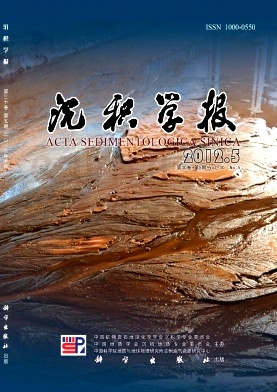Diatom Analysis in the Top and Bottom Muddy Sediments of BuriedOyster Reef for the Reef Mud Conversion Palaeoenvironmental Reconstruction, Northwest Bohai Bay
- Publish Date: 2012-10-10
-
Key words:
- northwest Bohai Bay /
- oyster reef in Dawuzhuang /
- oyster reef in Konggang /
- diatom analysis /
- intertidal zone /
- /
- /
- /
Abstract: Dawuzhuang oyster reef is the deeply studied one in the recent years while Konggang oyster reef is a new one on the northwest coast of Bohai Bay. Diatom analysis of the muddy sediments filling into the oyster shells, between the shells and in the overlying muddy layers all contained the Auliscus caelatus which indicated that the late development of the reef and the early stage of the overlying muddy layers are all belonging to the intertidal zone environment. However, the reefmud conversion was not the same in these two reefs. (1) The Auliscus caelatus in Dawuzhuang oyster reef decreased gradually from the top of the reef to the overlying muddy layers, which indicated an environment change from the middle to upper parts of intertidal zone, upper parts of intertidal zone to supratidal zone. (2) The Achnanches brevipes, indicating estuary environment, with the percentage of 6%~23% were found only in the overlying muddy layers of Konggang oyseter reef. It showed estuary influence in the muddy layers. The above differences revealed the reefmud conversion was not the same in the two reefs. The Dawuzhuang oyster reef grew up to the middle to upper parts of intertidal zone in the year 5 520 cal BP, and development stopped with the gradual disappearance of the marine influence. The Konggang oyster reef grew up to the intertidal zone in the year 4 000 cal BP and was suddenly buried by the muddy and sandy sediments which maybe from the Yellow River. Therefore, the "reefmud conversion" periods, which the oyster reefs stopped growing up and began overlaid by the mud layers, are 5 520 cal BP and 4 000 cal BP in Dawuzhuang and Tianjin Konggang, respectively. The seawater didn't quickly exit when the two reefs stop growing, and then 1.2m thick intertidal zone sediments and 2.9 thick lagoonintertidal zone sediments respectively deposited in the two locations. The author speculated that the seawater completely withdraw from the two reefs were later than 4 700 and 1 100 years ago. The altitudes of the maximum marine layers are -1.44 m in Dawuzhuang and 0m in Konggang profiles. It was speculated that the relative sea level were 2.95 m under the modern sea level in 4 700a ago and 1.5m under the modern sea level in 1 100a ago. This is due to the crust decline and compaction which indicated that the earlier of the regression, the lower position of the upper limit of the marine layer in the west Bohai Bay. The ancient Yellow River diverged and into the sea from Tianjin in 4 000 years ago. At the same time, the large number of the sediments into the sea and made the coastline constantly advanced seaward which lead to the subsequent oyster reefs developed seaward.
| Citation: | Diatom Analysis in the Top and Bottom Muddy Sediments of BuriedOyster Reef for the Reef Mud Conversion Palaeoenvironmental Reconstruction, Northwest Bohai Bay[J]. Acta Sedimentologica Sinica, 2012, 30(5): 879-890. |






 DownLoad:
DownLoad: